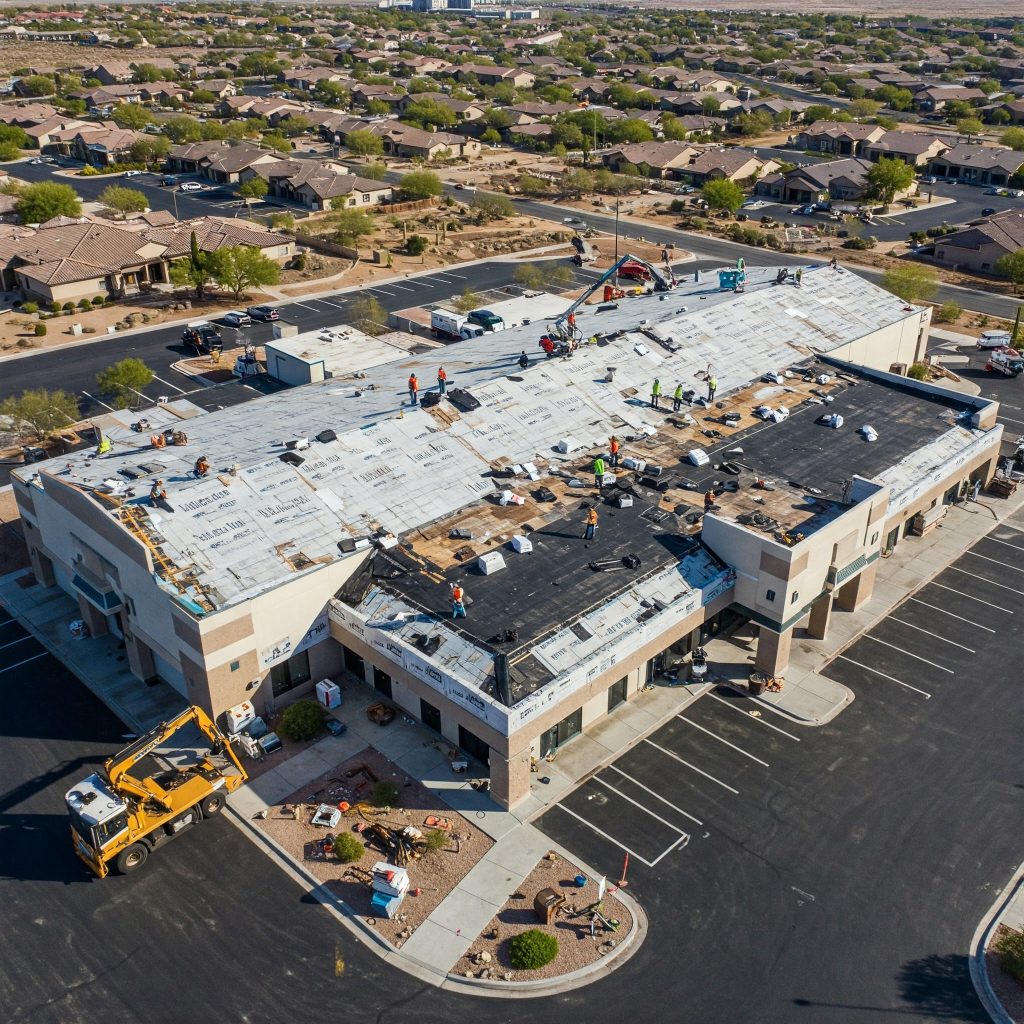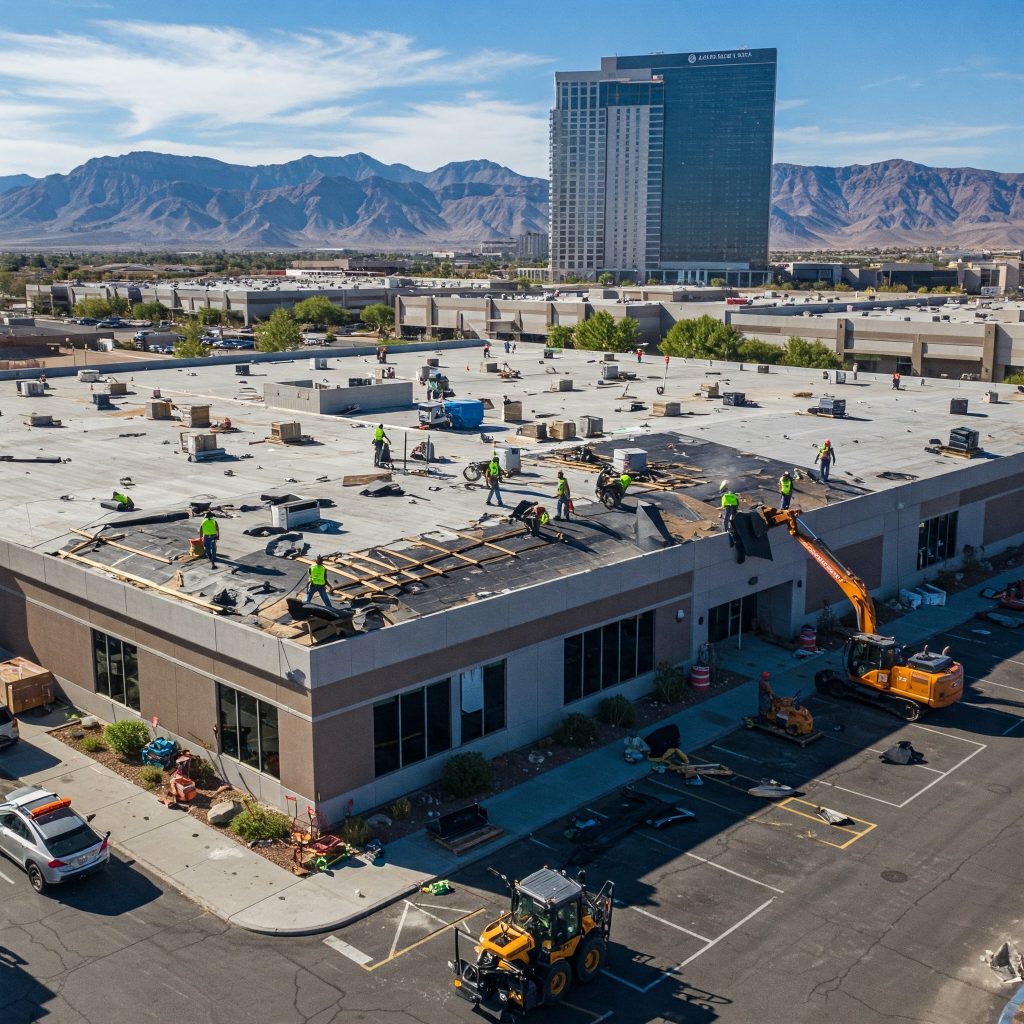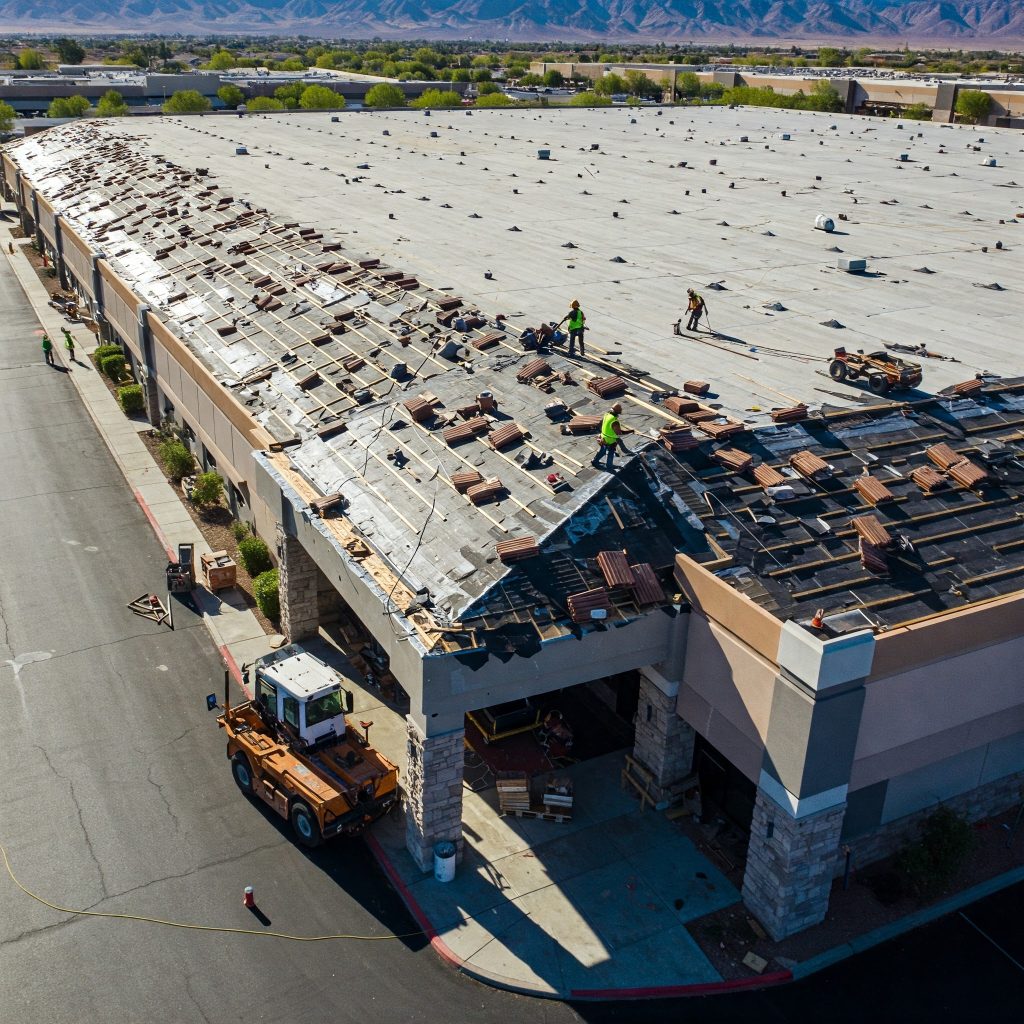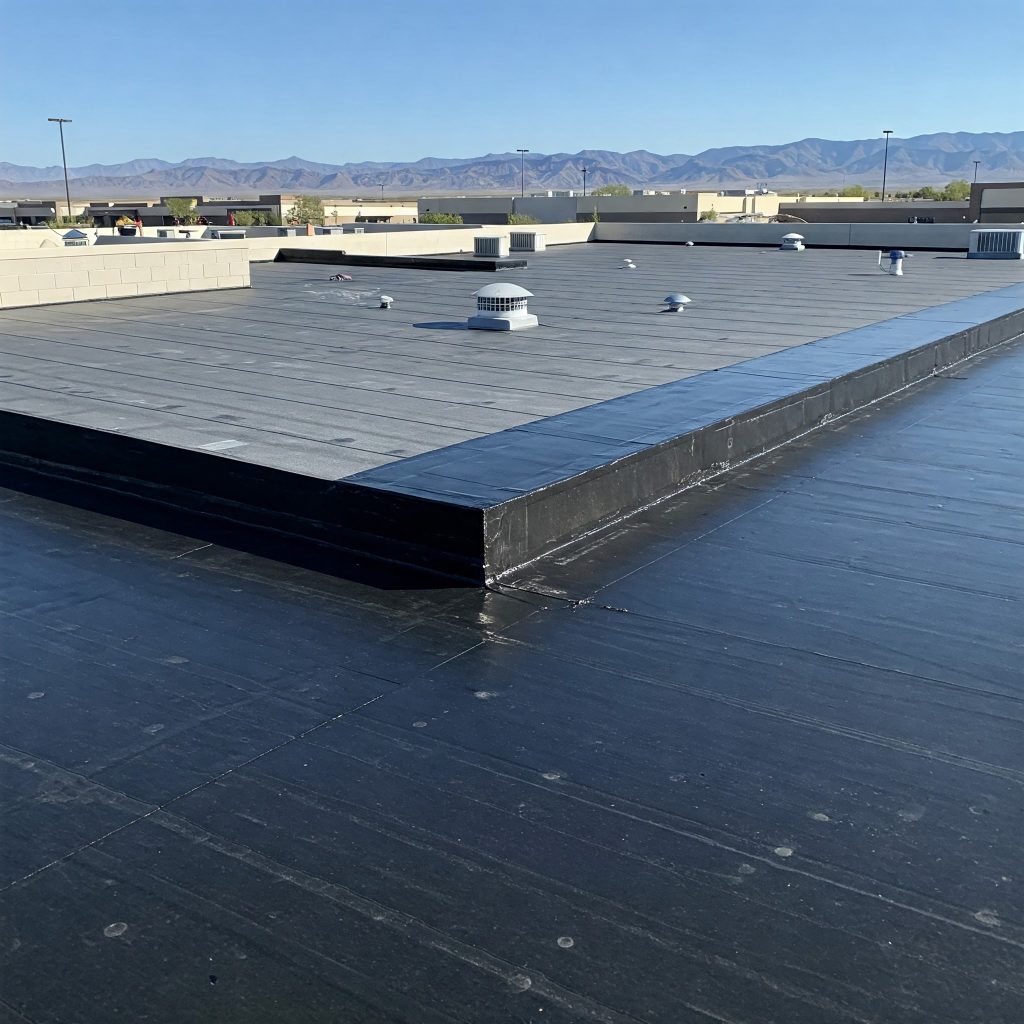Commercial Roofing Replacement in Las Vegas: Choose the Right Material with Confidence
Replacing a commercial roof is a major investment, and in a city like Las Vegas—where temperatures soar, sun exposure is relentless, and monsoon storms can cause sudden damage—choosing the right roofing system is critical. At Commercial Roofing Replacement Las Vegas, we help property managers, developers, and business owners navigate this important decision with confidence by offering expert consultation, quality materials, and skilled installation tailored to your building’s unique needs.
Every roof replacement begins with a comprehensive inspection. Our team assesses your roof’s condition, structural integrity, drainage performance, and insulation levels. Based on those findings, we provide a clear summary and recommend the most appropriate course of action, whether it’s a targeted repair or a full replacement. We’ll also walk you through your roofing system options, highlighting the performance, cost, and maintenance considerations of each.
Let’s explore the most common commercial roofing materials in Las Vegas and how each performs in the region’s challenging desert climate.
Understanding Your Roofing Material Options in Las Vegas
Single-Ply Membranes: Lightweight, Flexible, and Energy-Efficient
Single-ply membranes are among the most popular systems for low-slope and flat commercial roofs. These membranes are installed in a single waterproof layer and are known for their flexibility, energy efficiency, and ease of installation.
The main types include:
EPDM (Rubber Roofing)
EPDM is a synthetic rubber membrane known for its long lifespan and flexibility. It performs well across a wide range of temperatures, making it suitable for the hot days and cooler desert nights of Las Vegas. Its black color, however, absorbs a lot of heat, which can drive up cooling costs in the summer. That can be offset with a reflective coating. EPDM is durable and easy to repair but can be vulnerable to punctures from foot traffic or sharp debris. In very dry climates, long-term shrinkage may occur if not properly installed.
Best for: Budget-conscious property owners seeking durability over reflectivity
Not ideal if: Reflective, cool-roof performance is a top priority
TPO (Thermoplastic Polyolefin)
TPO is widely used in commercial construction for its white, reflective surface that reduces heat absorption. This makes it especially appealing for energy-conscious businesses in Las Vegas, where keeping cooling costs low is a top concern. TPO is UV-resistant, ozone-resistant, and resistant to many chemicals. However, formulation quality varies by manufacturer, and earlier generations of TPO had durability concerns in high-heat climates. Modern TPO membranes have improved, but consistent installation quality remains essential for performance.
Best for: Businesses wanting energy efficiency and cost-effectiveness
Not ideal if: You’re concerned about long-term performance under intense UV without warranty support
PVC (Polyvinyl Chloride)
PVC is another white, reflective membrane that delivers strong UV protection and heat resistance. It’s chemically resistant and holds up well in environments where oils, greases, or industrial pollutants are present, making it ideal for restaurants, auto repair shops, and manufacturing facilities. While more expensive than EPDM or TPO, PVC has a long track record of durability and low maintenance. It’s highly fire-resistant and has strong heat-welded seams, providing exceptional waterproofing.
Best for: Facilities exposed to chemicals or high heat that need a durable, energy-efficient system
Not ideal if: Initial budget is limited and long-term performance under heavy foot traffic isn’t a major concern
Modified Bitumen Roofing: Layered Durability for Foot Traffic
Modified bitumen is a multi-ply roofing system derived from traditional asphalt but modified with plastic or rubber polymers for added flexibility. It’s ideal for roofs that experience regular foot traffic or need extra protection from punctures.
This system is known for its durability and layered protection, making it suitable for flat roofs in commercial settings. The challenge in Las Vegas is its tendency to absorb heat due to darker surface colors. However, reflective cap sheets or coatings can be applied to mitigate this issue. Modified bitumen can be installed via torch, cold adhesive, or self-adhered rolls, offering versatility in application methods. In the dry Vegas climate, torch applications must be handled with extreme care.
Best for: Warehouses, retail, and other commercial buildings needing impact resistance
Not ideal if: You want a lightweight, high-reflectivity roof from the start
Built-Up Roofing (BUR): A Proven System with Heavy-Duty Protection
Built-up roofing, also known as tar and gravel roofing, has been used for over a century. It consists of alternating layers of bitumen and reinforcing fabric, often topped with gravel or a reflective cap sheet. Its multi-layer design offers exceptional waterproofing, impact resistance, and fire protection. The gravel helps shield the membrane from sun damage and physical wear.
In Las Vegas, BUR performs well in terms of fire resistance and durability, but its darker surface and weight are downsides. It requires more structural support and careful installation. BUR also requires experienced labor, and detecting leaks can be more difficult due to the gravel top layer.
Best for: Owners prioritizing long-term durability and proven performance
Not ideal if: Weight and installation disruption are concerns, or you’re seeking a highly reflective surface
Metal Roofing: Long-Term Value and Reflectivity
Metal roofing, while more common on pitched commercial buildings, is gaining popularity on low-slope applications with the right systems. Standing seam and R-panel metal roofs are known for their longevity, often lasting fifty years or more when maintained properly. Metal reflects sunlight effectively, reducing heat transfer and helping to maintain cooler indoor temperatures. Light-colored or specially coated panels enhance this benefit further in Las Vegas’s hot, sunny climate.
Metal roofs resist fire, wind, pests, and UV exposure exceptionally well. They are also lightweight and recyclable. While the initial cost is higher than membrane systems, the long-term savings on energy and maintenance often justify the investment.
Best for: Long-term investors or property owners focused on sustainability and energy efficiency
Not ideal if: Budget constraints limit up-front spending or insulation is inadequate to control noise
Making the Right Decision with Commercial Roofing Replacement Las Vegas
No two commercial roofs are alike. Factors such as building use, HVAC placement, foot traffic, insulation needs, access restrictions, drainage conditions, and local code compliance all play a role in determining the best roofing system. That’s why Commercial Roofing Replacement Las Vegas never recommends a one-size-fits-all solution.
Our process is rooted in transparency, safety, and long-term value. We assess your roof in detail, explain the pros and cons of each material based on your property’s needs, and present a plan tailored to your building, timeline, and budget.
Whether you’re managing a retail center in Henderson, a warehouse in North Las Vegas, or a multi-tenant office near the Strip, our team will ensure your new roof is designed for performance, efficiency, and long-term protection.
Let’s Get Started
Protect your property, reduce energy expenses, and avoid costly downtime with a professional commercial roof replacement from Commercial Roofing Replacement Las Vegas.
Schedule a free roof inspection today and find out which roofing system is right for your building. Our Las Vegas & Summerlin-based team is ready to help you plan for the future with confidence.




